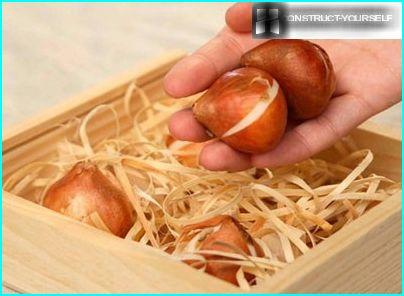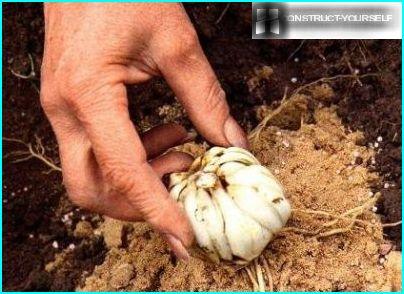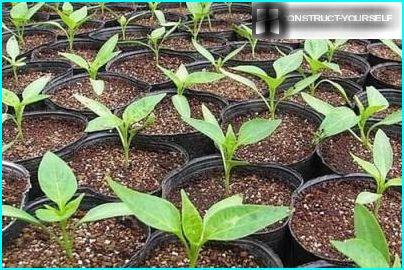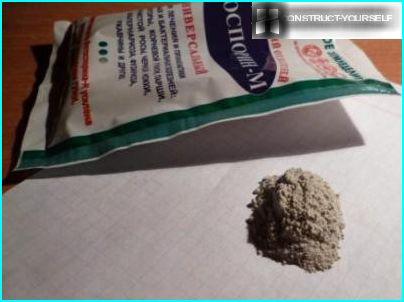The contents
What determines the timing of the planting?
There are several opinions about the timing of planting lilies in the open ground. Traditional planting time is autumn, or rather, its first half. This is due to the natural cycle of plant development: after flowering comes a resting period (a few weeks), after which the growth of the follicles aktiviziruyutsya, hatch roots. As a result, in the early spring, along with the first rays of the spring sun appears flowering Bud.
But sometimes, due to various circumstances, gardeners choose to planting an early spring. The reasons can be anything from simple time constraints to account for the peculiarities of a certain sort. Suppose, Oriental hybrids are developing well, and the North American varieties simply can not withstand more harsh conditions.

Consider the benefits to the April planting in the open ground:
- the bulbs don’t need to dig into the ground and specially heat storage suitable refrigerator;
- home «wintering» eliminates freezing and damage, and ensures the full safety;
- with good preparation of the soil and bulbs of the plant has time to grow and bloom in time.
There are drawbacks that are worth mentioning. For example, some varieties do not have time to fully develop the root system, and plants exist only through the power of the bulb. It is clear that neither tall nor beautiful blossoms should be expected. One more unpleasant nuance – the lack «spring» lilies of children, which are often used for breeding. By the way, planted fall crops yield about 10 healthy children.

Tubular varieties are not susceptible to disease and resistant to frost, therefore they are recommended to grow even in the Northern areas
If the summer is short and cool, experts recommend to refrain from spring planting – lilies, will likely bloom the next year (in this case it is reasonable to put them in October). For easy care flower garden spring and autumn planting is better to place in different areas as soil preparation, watering, fertilizing will be radically different.
In late spring, in late may and early summer to plant lilies is not necessary – the plants grow weak and unprepared, are more susceptible to diseases. The most suitable period for planting in the middle lane – the end of April.
Spring planting lilies
If you missed the fall season or just decided to experiment, remember that spring planting works have some differences. And the ground under the lilies, and the plants themselves require additional treatment.
Selection and storage of planting material
Beautiful, tall lilies can only grow from bulbs that have no signs of diseases – rot, mold, spots, scales, differing in color or texture. The roots should be «alive», never dried, a length of about 5 cm If the purchase takes place in the spring, it is better to purchase the bulbs have small shoots.

Healthy bulbs easily identified by appearance: flakes, uniform white or yellow do not have foreign inclusions, and roots – strong and supple, without stains
Suppose you have prepared the planting material even in the fall and want to save the best till spring. Place the bulbs on the bottom shelf of the refrigerator and regularly check their condition. Perhaps some will go to growth and «shoot» earlier than expected. Sprouts must be maintained, and the bulbs can be planted in special containers or ordinary flower pots. As soon as freezing, «sleeping» growing instances of bring out in the open ground.
There are several effective preventive measures for protection of planting material against fungus and harmful bacteria. Disinfection of the bulbs produces the well-known solutions, for example:
- washed in clean water and then 25-30 mins place in a weak solution of manganese – 5-10 g of the substance in a bucket of water;
- kept in a solution of fungicide «Fundazol» (for the user);
- remove any damaged scales, 2-3 thoroughly washed in water, placed in a solution of Malathion (in a bucket of water rather than 1 tbsp. of matter) – if the follicles seen signs of infections.
The protection effect will increase if after planting to produce insulation of nests. The easiest way – the use of plastic cans or bottles cut off the top half. Inverted containers play the role of mini-greenhouses for shoots.

The hue of the buds of some varieties depends on the degree of illumination, and in partial shade, the color becomes more saturated, bright, deep
If you need to transport the bulbs, or keep for several days «overexposure», place them in any convenient container, covered with damp moss and loose soil, sand or sawdust.
A little tip for lovers of Asian hybrids, breeding bulbectomy stem (formed at the time of ripening in the leaf axils). For storage in the winter they are placed in hermetically closed plastic bags and put the pots with peat, which is installed in the room or refrigerator with a temperature of 1-3?With.
In the process of purchasing do not forget to specify the variety of lilies depends on the place, time and conditions for planting and growing methods.
Preparation and processing of soil
If common words to describe the properties of soil useful for growing lilies, it should be loose, healthy, alkaline, moist.

One of the variants of soil for growing lilies: a mixture of turf land, peat, river sand, coniferous litter, in equal proportions. You can add soil for flowers
To do this, before spring planting, when the ground thawed and became relatively soft, are preparing:
- perekidyvaem the upper soil layer (35-40 cm in depth);
- arrange drainage to drain excess water;
- if earlier this place was grown with other plants, adding fresh soil or substrate;
- enrich the soil with humus or phosphorus-potassium fertilizers;
- it reduces the acidity to pH 6.5 ( a pound of chalk or 200 g of wood ash per 1 m? soil);
- periodically water the soil to wet.
The quality of drainage you can use gravel or river pebbles. So the bulbs were healthy, large and strong, in the ground, you can add some pine mixed in with the sand. Most importantly, no biological fertilizers, especially manure. On top put a layer of peat, rotted sawdust or compost.

Planting lilies in the open ground in April, be sure to check the condition of the soil – it should be thawed, soft and loose
Choose a Sunny place and dig a shallow pit (10 cm), although much depends on the choice of varieties. With the exception of some species, follicles is usually placed at a depth equal to three diameters.
Some gardeners to keep the sprouts from sudden spring frosts, dig the hole a little deeper, but adhere to the rule: the lighter the soil, the deeper the hole. Thus, low-growing culture are planted at a depth of 8 to 12 cm (depending on size of bulb), tall – from 12 to 20, see If the roots are powerful enough, add another 5 cm.
The intervals of planting, the depth of the holes depends on the variety. Among low-growing plants, enough to leave 15-20 cm high and powerful should be separated from each other by a gap of 25-30 cm.

The depth of holes and intervals between them depends on the plant development: the staff is beautiful for the benefit of, the flower garden looks unkempt
Ensure that the landing lilies were not flooded by the spring waters. If you want inflorescences was turned to the side of the house or track, try to plant them to the North of objects.
Initial and subsequent feeding
Regardless of the time planting flowers, the soil should be fertilized with mineral fertilizers. Refrain from cow manure, especially fresh. It affects bulb growth and development of plants during flowering.
Depending on the type of soil in the spring, the soil should contain the following additives:
- ammonium nitrate (1 tablespoon per 1 m? soil);
- NPK (50 g in a bucket of water);
- wood ash.
Feeding the soil, you must follow strict dosage, since the excess of minerals also affects the development of germs. The only substance that truly love Lily, is wood ash. It can be added during the season up to 5-6 times. Ash is not only useful for the colors forms an alkaline environment, but also protects against certain types of pests and mold.

Sometimes, especially in the Northern areas, before planting in the open ground lilies are planted in containers or flower pots – up to complete thawing of the soil
Plants planted in the spring, except for the initial feeding must be nourished for at least another 2 times. Before the formation of the buds it is necessary to impregnate the soil with a solution of nitrophoska, and after the flowering period with a solution of superphosphate (40 to 50 grams per bucket of water). The last feeding nourishes the follicles, preparing them for the winter period.
At the same time with mineral fertilizers make the prevention of diseases. In may, when the sprouts are a little stronger, saturate the soil with 1 percent Bordeaux fluid. Repeat the procedure a couple more times in July, but by spraying the whole plant. If you notice on the plant for signs of diseases such as Botrytis, continue feeding the bulbs need additional power.
Features of the watering
Prepared and nourished soil is useless if you do not follow proper water irrigation since planting of bulbs. On the first day the soil should be thoroughly watered, and then watered regularly observing two important conditions:
- to prevent stagnant water;
- not to overdry the soil.
Any violation leads to the suspension of development in which the budding and the whole process of flowering will not occur in full. Proper irrigation provides the most important thing for flowering crops – lush, healthy, beautiful blossoms.
For longer moisture retention in soil mixed with pine needles or rotted sawdust – they are soggy and do not allow the soil to dry out. It is not necessary to plant lilies too thick, the moisture is distributed evenly and in sufficient quantity.

The choice of location for planting depends largely on the possibilities of a suburban area, but make sure the plants were in bright, well-lit area or in the partial shade light
Suitable for watering morning and afternoon hours. Carefully watering, try to spray water in the area of the root. Spray falling on the leaves can cause the development of diseases (e.g. Botrytis) or burn. Water droplets – this kind of lenses, concentrating the sunlight. In this sense, consider this method of irrigation, as drip irrigation – water is periodically supplied directly to the plant roots, providing them with strictly dosed amount of moisture.
The scary waterlogging? In cloudy and cool weather dampness favours the development of brown spot and in the heat of the wet rot and Fusarium.
Protection from pests and diseases
Consider the dangers that lie in wait for plants planted in April-may.
In early spring you may encounter such a nuisance as bacterial (wet) rot. It manifests itself in the form of golovatyj spots / streaks that appear first on leaves, then move to the stems. Over time, infected the whole plant, and the affected areas just die off. To protect yourself from this trouble, you should reduce watering and eliminate nitrogenous fertilizers.
Smaller, but brighter, brown spots on the leaves indicate a different disease – rust. She tolerated bulbs, so you should carefully select planting material. Infected leaves gradually dry up, so they must be immediately removed. For the treatment of choice Bordeaux liquid, some fungicides.

Fitosporin – an excellent tool for the prevention and treatment of fungus and bacterial diseases – scab, black leg, root and Botrytis, Phytophthora, rust
The scourge of lilies Botrytis (grey mould). The infected plant is covered with rapidly spreading brown spots. The causes may be different, but the most common one is the wetting and abrupt temperature changes. To avoid mold, you must often loosen the soil and to process the plant substances containing copper.
If the tops of the sprouts begin to turn yellow – there was root rot. She lives on the roots of the bulbs. Will have to pull out the plant, remove diseased parts and to disinfect.
To hurt Lily can not only disease, but also harmful fauna: thrips, aphids, beetle Piskun, larvae of beetles and click beetles, spider mites. To destroy them created a number of chemicals, for example, «INTA-VIR». Insecticides can not cope with the beetle squeak again, so you should remove it manually. In a similar way are usually destroyed and a bright orange Lily beetle.
Lily flies, thrips, aphids, larvae of beetles derive chemicals «Thunder», «Pavatex», «Mukhoyed», «The initiative», «Meditox», «Grizzly».
Bulbs are sometimes subject to invasions of mice. In addition to the conventional mesh fences for protection against rodents use planting of snowdrops, daffodils or Crocus.
Errors when growing lilies
Some bugs related to the spring planting of the lilies and the further care of a flower bed, fraught with the death of the plants, so try to avoid them in the first place:
- Planting bulbs in the lowland area. This is a critical flood zone and, therefore, sensitive to waterlogging lilies in this area just die.
- The violation of the watering. A long period of drought and waterlogging, dangerous flowers. Watering less frequently but more abundantly.
- Fertilizer planting with manure. Faces of a range of diseases. Instead of mullein use humus, or compost type «Hero».
- Overheating of the soil. The direct rays of the sun and high temperatures damage plants. Out – planting in partial shade and mulching with dry grass or sawdust.
As you can see, the rules for the planting and care of lilies is very simple, and for a good result the only important thing is regularity. Don’t expect in the first year from a spring planting abundant flowering, but the following year, the beauty and the splendor of the flower beds will exceed all your expectations.
And finally — a few tips in the video:






